INDIAN ARMED FORCES CHIEFS ON OUR RELENTLESS AND FOCUSED PUBLISHING EFFORTS

The insightful articles, inspiring narrations and analytical perspectives presented by the Editorial Team, establish an alluring connect with the reader. My compliments and best wishes to SP Guide Publications.

"Over the past 60 years, the growth of SP Guide Publications has mirrored the rising stature of Indian Navy. Its well-researched and informative magazines on Defence and Aerospace sector have served to shape an educated opinion of our military personnel, policy makers and the public alike. I wish SP's Publication team continued success, fair winds and following seas in all future endeavour!"

Since, its inception in 1964, SP Guide Publications has consistently demonstrated commitment to high-quality journalism in the aerospace and defence sectors, earning a well-deserved reputation as Asia's largest media house in this domain. I wish SP Guide Publications continued success in its pursuit of excellence.
- The layered Air Defence systems that worked superbly, the key element of Operation Sindoor
- Operation Sindoor | Day 2 DGMOs Briefing
- Operation Sindoor: Resolute yet Restrained
- India's Operation Sindoor Sends a Clear Message to Terror and the World – ‘ZERO TOLERANCE’
- Japan and India set forth a defence cooperation consultancy framework, talks on tank and jet engines
Indiaís space industry needs more awareness, acknowledgment & appreciation: SKI CEO
Following the successful feat in ISROís latest PSLV-C51 launch, SpaceKidz Indiaís CEO Dr. Srimathy Kesan sat down amid ecstatic joy for an exclusive interaction with Ayushee Chaudhary of SPís on the occasion of international womenís day.
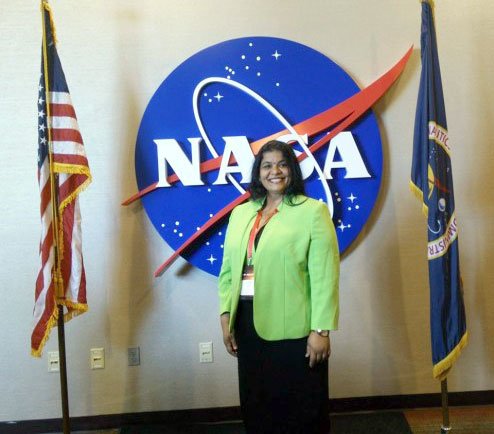
SPís Aviation (SPís): Congratulations to you on the successful launch of your nano satellite SDSAT. What makes this launch and this satellite so special?
Dr. Srimathy Kesan (Kesan): It was a challenge for us but also a chance to prove our capability. Last time when we launched KalamSat, it was the first time for everybody and we had built that in a rush of six days and we could not really prove much in that mission. In comparison to that, this one gave us quite a lot of time. We wanted to do as much testing as possible and prove it to the world that though you may not have big scientists or anyone mentoring you, still you can do big with your make or break technology. Also, we named it Satish Dhawan SAT (SDSAT) to commemorate the centenary of Professor Satish Dhawan and pay a fitting tribute to the man who loved space so much and did so much for the industry.
We didn't expect LoRa to work so much, not only is it sending signals to us but itís winking its eyes to everyone across the globe.
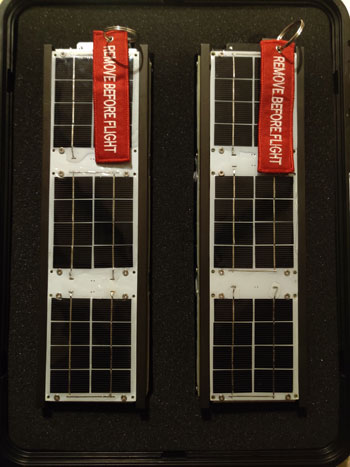
SPís: Could you take us through the process and timeline of building this satellite?
Kesan: So we begin with a drawing board session where we look into the design for the satellite. After designing the satellite, we have to see if the design is suitable to stay stable in all competencies, and if it will be able to sustain the G-force. Then we start choosing the material, the material has to sustain the harsh environments and radiations of space as well as the G-force; followed by electronics and then one after another, sourcing it all here and building it here, that's why we feel so proud right now. The drawing board session was done in June 2020, and in August the designing was done followed by putting together everything else by December 2020 and by February 2021 the engineering model of the satellite went up.
SPís: Did the pandemic prove to be a hurdle in any manner? Were there any other challenges that you encountered?
Kesan: The pandemic actually gave us more time. The designing, the testing and everything could be done as we had our own time and less distractions so it actually helped us. Space in general is very harsh. If you make one mistake you are done so we have to be very cautious and careful. And in that sense every bit of it is a challenge, from designing the structure to withstanding this whole thing, from what material you are going to use to build it, the sensors to be put. But if you don't have so many challenges then today you won't be sitting happily seeing the results and the fruits of all the pain.
Listen to our Satellite ( Sathish Dhawan Sat) singing up above happily all alone in Space.. pic.twitter.com/OO0TMQ0Z0p
— Space Kidz India (@SpaceKidzIndia) March 5, 2021
SPís: What is the most significant aspect regarding the data expectations from the satellite?
Kesan: We actually had one payload called LoRa (the Long Range) technology which is a wide network that uses little power to send a lot of data, and is IOT (Internet of Things) based. We had our own predicaments if this is really going to work as we had to send it 500 kms away with a very little power source but now every 10 minutes we are getting data from it. Not only we, across the globe people are able to detect that, whoever has a LoRa transponder is able to receive the signals. This is really exciting and is like a technological demonstration for our upcoming missions where we will try to put the rest of the data also via LoRa; be it to get radiation, about stratosphere, short and M2M communication, etc. Our aim was also to study space radiations through the satellite, and it has been emitting good signals for that as well. It has finished its 100th orbit and we are hopeful for at least a healthy six months of SDSATís presence in the orbit.
It was very gratifying for us when small organisations like ours could go into ISRO and use the testing facilities there. We wanted to thank the PM and sending his picture engraved on the satellite seemed the best way, no other country has given this honour to a Prime Minister.
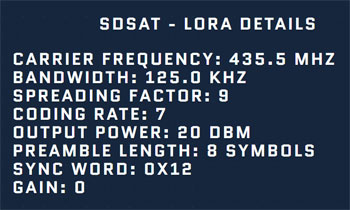
SPís: The satellite carried the Bhagavad Gita and that has attracted a lot of spotlight. How did that idea come about?
Kesan: It is a book that's read world over. It is considered the ďSupreme epic of IndiaĒ but it t does not have a tint of any religion in it, people irrespective of any religion, caste or creed, or country follow the principles of Bhagavad Gita. It predominantly speaks about a lot of management techniques, astronomy, astrophysics and so many more life lessons. So many things are there in that one book and it was a very instantaneous thought that this book deserved it. It acts as a positive vibe for people and has especially proven that recently in the pandemic times.
SPís: There is also Prime Minister Modiís picture that was engraved on top of the panel, how about that?
Kesan: Yes. It was very gratifying for us when small organisations like ours could go into the Indian Space Research Organisation (ISRO) and use the testing facilities there. It was overwhelming for us, something that has never happened in 50 years. So there is something that this man has done to benefit so many people. So we wanted to honor him and this felt like the best way to do that, no other country has given this honour to a Prime Minister. We intended to show solidarity and gratitude for his Atmanirbhar initiative and Space privatisation.
SDSAT has finished its 100th orbit and we are hopeful for at least a healthy six months of SDSATís presence in the orbit.
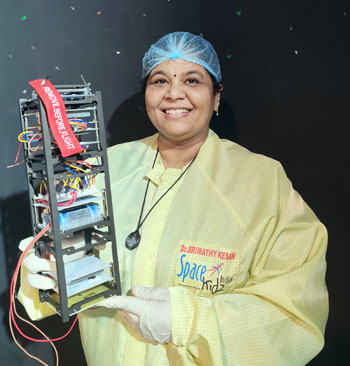
SPís: What role has Atmanirbharta played in this particular satellite?
Kesan: Everything is home grown and home built for the SDSAT, we were very particular about it and I would say it is paying results too. We are getting signals and data regularly so I would say Atmanirbharta has definitely paid off well. We were slightly nervous but are so proud right now and ecstatic.
SPís: So would you say privatisation is a good move for the space industry?
Kesan: I was extremely delighted when the Finance Minister announced the privatisation. It gives a lot of startups hope on building something new and different; not only start-ups but small organisations to think beyond and work on collaborations. For instance, signing a Memorandum of Understanding (MoU) with ISRO was something you would never dream about but that happened, so I think this a brilliant thing. This private-public partnership has always worked for our country and in the long run, this is going to take us forward on a huge tangent. Not only for us but for millions of youth in the country, this privatisation and opening up of ISRO is going to be highly beneficial, as space is the future.
SPís: Where do you see India's space sector heading further?
Kesan: There is definitely a big rise and an acceleration of graph. India is planning to have its own space station also, our inter-planetary missions are going to be successful and a lot more viable missions, like the plans to have our base on the moon, will come around. Mangalyaan's success in the first go was a testimony that we have the knowledge and the talent, it is just about the allocation of funds and how we encourage our scientists, but wonders are surely going to happen.
This private-public partnership has always worked for our country and in the long run, this is going to take us forward on a huge tangent.
SPís: What are challenges for the Indian space industry?
Kesan: I donít see any particular challenges apart from funding and more awareness and recognition among people. People need to believe in the space sector more, and support those who are working for this sector, and collaborate. Money is important but money is not everything, motivation is very important too. Our scientists are slogging and doing so much, they deserve a pat on the back.
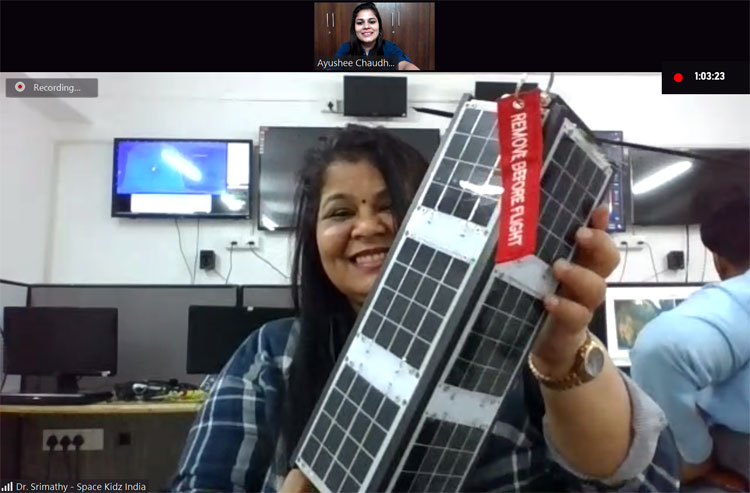
SPís: So what is Space Kidz India (SKI) doing to publicise and popularise space science?
Kesan: We sent out the names of 25000 common people on the satellite to spread awareness among children. I thought people should understand what is space, what is space travel and atleast children should be aware of the value of space. From the 25000 names about 1000 that we received were from outside the country. The aim was that atleast those 25000 people will be engaged this way, will participate in the happenings and the launch, even if remotely, and add to the awareness. There is a lot of sacrifice and effort that goes in space especially to mention ISROís journey, it has been commendable but hardly lauded enough. I am trying to do my bit to enhance the awareness and I hope someday the excitement will be so much that before a launch, people would be gathered like they are in cricket stadiums for a match. I am hoping that people will start acknowledging that science is about experimenting and they should appreciate the little things not holding on to some mishaps.
I am also voicing out for a research park about which I had a chance to speak to the PM and heard he has given green signals to start that.
I am also voicing out for a research park which I believe is the gateway to sowing a seed in a young childís mind which is bound to heap huge results in the future. I had a chance to speak to the Prime Minister and heard he has given green signals to start that. At SKI we also offer various courses related to space sciences to children.
SPís: Why do you think is research so important?
Kesan: Space research is a very important industry for our country. Now small countries like Turkey, Iran have also started to take up space missions. We are atleast early in the race but we will miss the bus if we keep talking of tax payersí money etc. and not enhance awareness, research to engage more young talented minds in this sector and motivate the researchers.
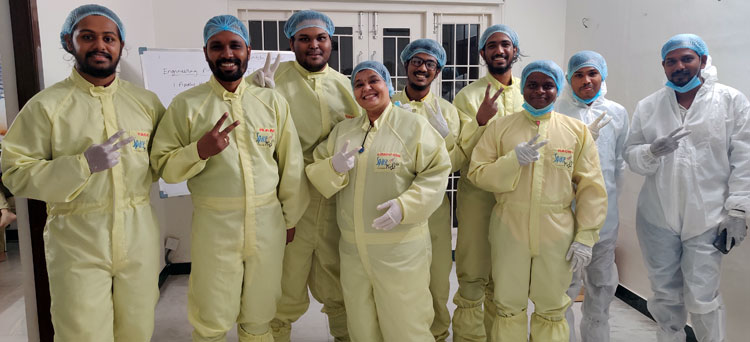
SPís: How has your journey of bringing together SKI been?
Kesan: It has been an amazing journey. I wanted to bring youngsters together and give them the platform because I believe when given the opportunity the young ones are brave, bold and they think out of the box. With the team of such people I think we can definitely create a difference in the world and we can go out to prove that if you acquire immense knowledge that's what is going to help you do things. That's how we got my team together and today we are where we are. Education definitely gives you the background but knowledge is something that does not come from education alone, it has to be acquired with consistent reading and so many other factors. At SKI we also believe that children have an aww factor for space and they need more information but our text books donít cater to that information about space sciences so SKI is trying to create a department to cater to young children. My leading scientist for this satellite and the Chief Technology Officer of SKI, Rifath Shaarook (now 21 year old) was merely 14 year old when he joined and but filled with passion to build satellites even then. Driven by the common purpose and constant efforts, today we are the only organisation, and led by a woman, in the country that has launched 12 high altitude balloons, two sub-orbital satellites and now two orbital satellites with students.
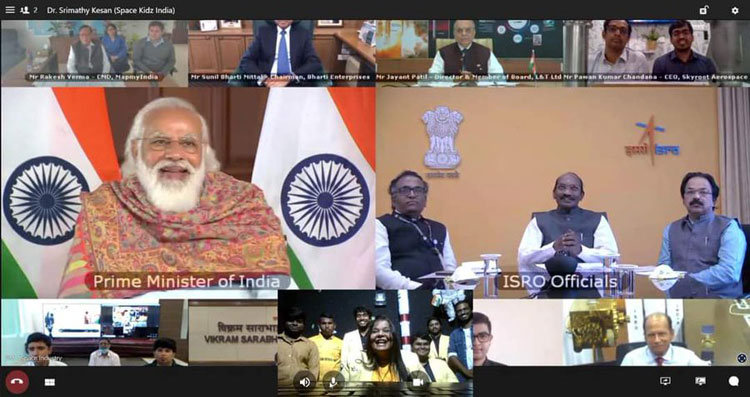
SPís: SKI aims to spread awareness among children for a "borderless world", can you elaborate on that?
Kesan: Right from our puraanas we have believed in universal brotherhood, and space is where I feel this is perfectly applied because space literally has no borders and collaborations can happen beautifully in space exploration. In this lift-off itself, the Brazilian satellite being launched is a strong example of that collaboration. NASAís lunar reconnaissancehad clicked picture and shared details of our Chandrayaan-2 that was another such a beautiful example. I believe this industry is a beautiful mixture of give and take not only in launching satellites but also for knowledge sharing. We should definitely look beyond borders and if that can be sown as a seed in children, I think all these political lines will also disappear in the future.
We are the only organisation, and led by a woman, in the country that has launched 12 high altitude balloons, two sub-orbital satellites and now two orbital satellites with students.
SPís: SKI has recently signed the MoU for ďBangla-Bharath students satelliteĒ, what is that project about?
Kesan: Yes, SKI has signed the MoU for ďBangla-Bharath students satelliteĒ with the global law thinkers society, a world record holder, Bangladesh's global youth organisation on the occasion of the 50th anniversary of Bangladesh's independence. The program was held on the eve of the republic day. The project plan is that Bangladeshi and Indian students together will build a satellite and launch it from India hopefully by June on the occasion of 50 years of friendship between the two countries. It is aimed at creating the next generation of scientific thinkers and growing interest in space education. We will be hand picking five children from Bangladesh who will come over to India, we will teach them the nuances of building, designing, etc. and explore working with ISRO. We intend to build a new satellite and talk to ISRO to get the launch done. We are also in talks with Maldives to have their students here as well for a similar program.
SPís: Whatís more in store from SKI?
Kesan: We are planning to build sound rockets. The designing has started, end of next year we should be readywith our sound rockets that we are working on. We have various courses planned for students. We initially had started with space camps with SKI beinga space tourism company taking students to visit NASA, ESA and experience the practical aspects pf the space profession. We are still doing that for some schools. Additionally, we are preparing complete educational programs, piloting courses in rocketry, astronaut studies, nano computer electronics, economical costing and more such will be launched in the near future. And we are hopeful that in the times to come the youngest person to go to space would be SKIís student.
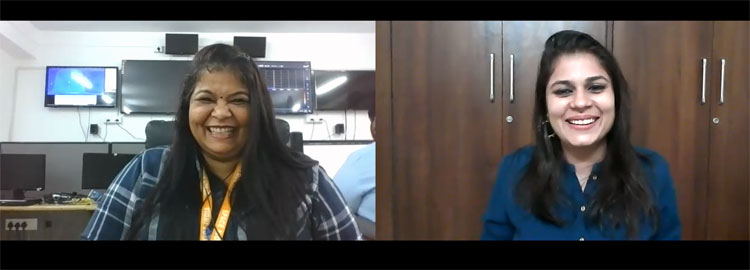
SPís: Any message for the women out there who aspire to be a part of the space industry?
Kesan: Across the globe only 30 percent of women are in STEM(Science, technology, Engineering, Mathematics) that too when they finish their graduation only 14% proceed to work, a lot of times they lose confidence. I also want to bring to notice here that not being from a science background should not be a hurdle. I am a commerce graduate, neither from science nor an engineer and yet here I am today with my team. So I urge women to have self-belief that they can do. It is okay if you fall down twice or thrice, come back and rise up strong, know your worth, walk your path. More than the success and other peopleís opinions, your own happiness is what should motivate you.





